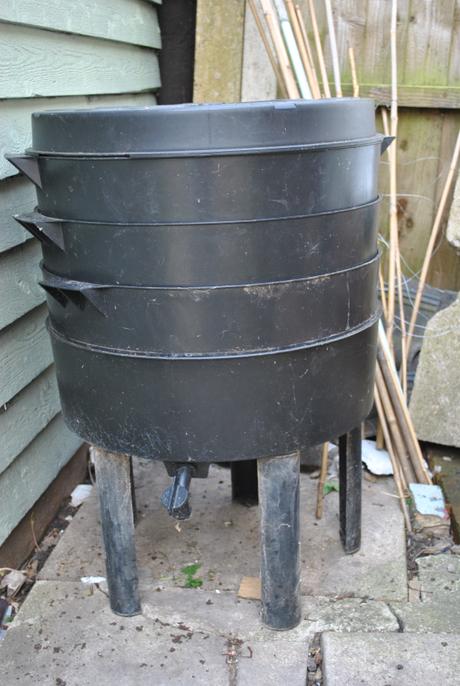Most gardeners are aware that decent compost and a bit of fertilizer always goes down well in the garden. I’ve been toying with the idea of getting a compost bin, but to be honest, with other things going on in the garden, it hasn’t been at the top of the ‘to do’ list.
Wandering around town in the week, I spotted something in one of the charity shops that really did pique my interest. A wormery. For a bargain price. With no further ado (and not a clue what I was actually going to do with the thing) I snapped it up and whisked it off home.
I’d heard about wormerys, and how they could be an alternative to a compost bin. I did know that the worms eat waste and convert it into a liquid fertiliser that apparently is great for the garden. Other than that, I was a tad clueless. On arriving home, I consulted my old friend Google (he knows EVERYTHING) and spent a pleasurable afternoon researching my new addition to the garden.
The first thing I found out is that you can’t use common old garden earthworms – you need special composting worms. These were found easily enough on a popular auction site, and should be arriving in the post at any time soon. In preparation for their arrival I whizzed out to set up their new home.
According to the advice on the web, worms are pretty undemanding, just needing a sheltered spot (not too hot in the summer; not too cold through winter), to be kept moist, and fed carefully.
With this in mind, I sited it in a lovely sheltered part of the garden which is luckily also quite close to the house which will be handy for me to nip out and feed them.
The wormery consists of a section at the bottom which collects the liquid fertiliser, followed by three compartments that sit on top of this. The theory is that you start the worms off in the first compartment, gradually utilising the ones above as it starts to fill up. The worms should move up during time, and the bottom compartments should then be full of compost to use on the garden.
Being second hand, my wormery came complete with a layer of compost in one compartment, which should provide an ideal substance for their bedding. On top of this went a little kitchen waste – apparently you feed sparingly until they’re established – a sprinkling of water, and the whole thing is now ready for its new inhabitants. They appear to be unfussy creatures, and should happily eat any kitchen scraps apart from onions, citrus peel or meat and fish. Once it’s up and running, they will also benefit from some ripped up cardboard.
It’s all rather exciting to think that a bunch of old worms will soon be chomping through our peelings and leftovers, creating compost and fertilizer in the process.
Nature at its best.

Wormery

